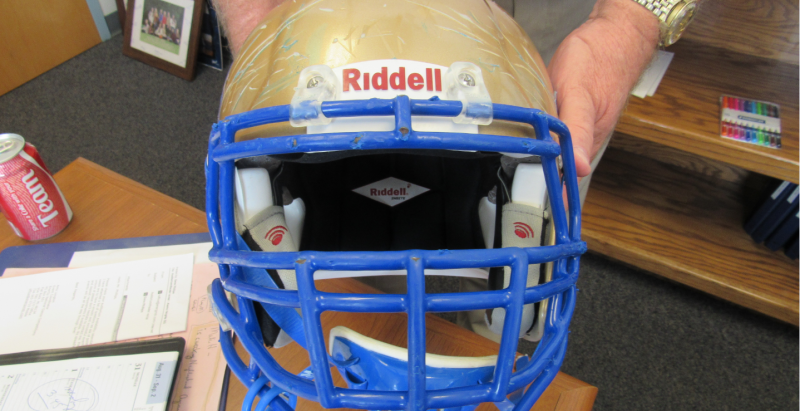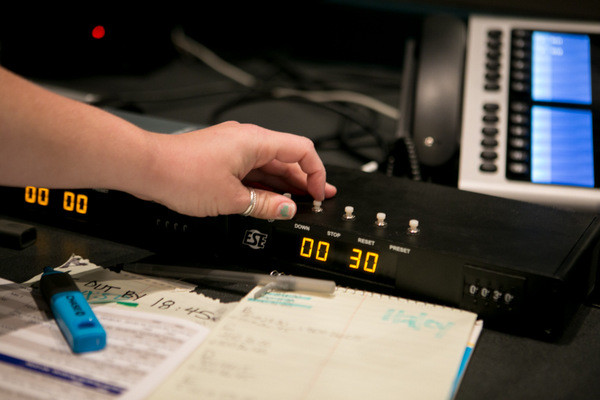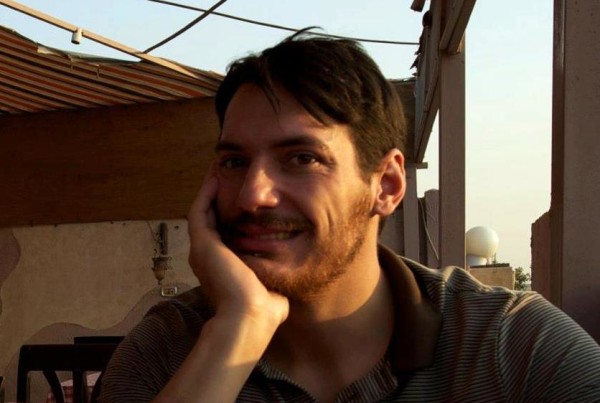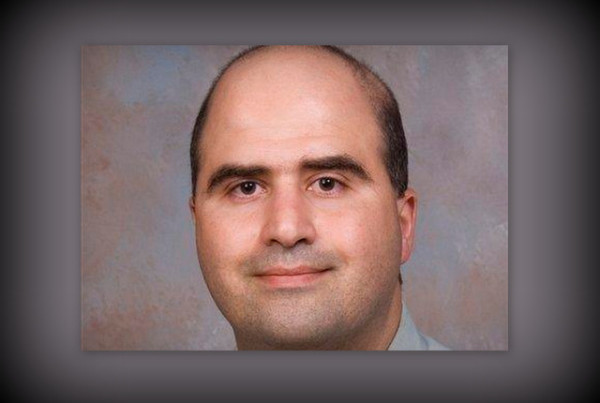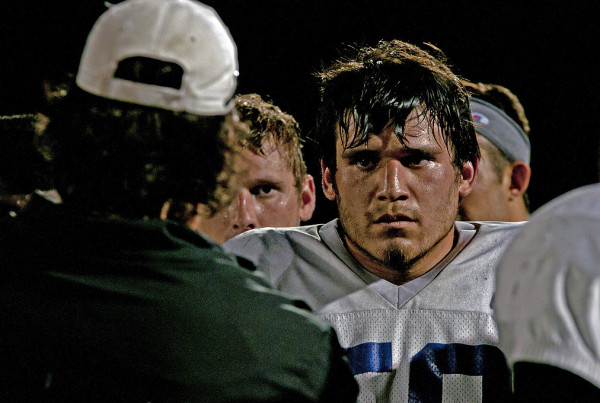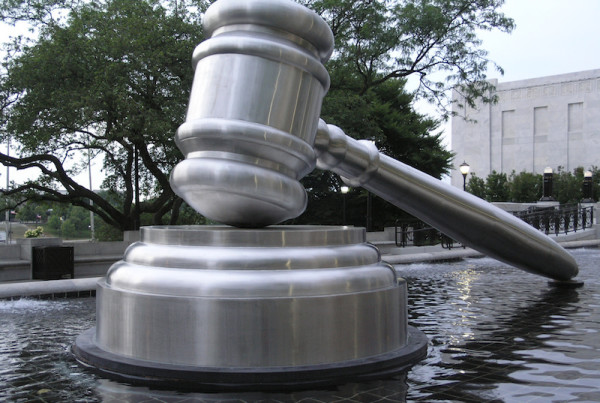This story originally appeared on Texas Public Radio. It’s the second in a four-part series.
“Hurry up, hurry up!” a coach yells at the players on the Alamo Heights Football team during practice.
There’s no lollygagging for the Alamo Heights Mules.
On this day, the team is running plays with contact. That means sometimes a player is going to “get his bell rung.” That’s what coaches call it when a player takes a shot to the head and they could have received a concussion. What used to be considered a minor injury in the game is now a major cause of concern. So this season the Mules varsity players are equipped with wireless impact sensors.
“Basically it’s a liner that goes inside the helmet,” explains Gene Philips, the Alamo Heights School District athletic director. He says the Mules’ booster club paid $8,000 dollars for the impact sensor system.
“It’s really not a diagnostic tool. [It’s] just a tool that says, ‘hey you might want to take a look at this kid he took a pretty good hit,’” he says.
When a player takes a hit to the head a team trainer is alerted on a handheld monitor. That player is called to the sidelines and evaluated.
But as head coach Mike Norment shows me how the sensors fit inside one player’s helmet, I notice that the gold paint on the outside of the hard shell is scratched and scarred from plenty of head hits.
I ask him if it means players are using the helmets for tackling.
“Helmets are going to come in contact,” Norment says. “If that was a lineman, a lineman’s helmet is going to be more scuffed up than a back row receiver helmet, but football is a contact sport, and the reason they wear a helmet is to protect their head,” Norment says.
The sensors do raise awareness of concussions but the helmets don’t prevent traumatic brain injury. Could a better helmet be the answer?
At the Southwest Research Institute in San Antonio there’s a lab that looks like a torture chamber for helmets.
“We take this up – drop it and impact it like that,” says engineer Daniel Pomerening, while smashing all kinds of head gear.
“We are abusing helmets,” he jokes.
He’s looking to see how well they protect the human skull.
“The industry is scrambling to come up with technologies to maintain the catastrophic injury protection while providing potentially additional protection against the concussion type injuries,” says Pomerening.
That includes helmets for hockey, motorcycle riding, snowboarding, biking and football. But there’s a major problem. Protecting the cranium from cracking doesn’t protect the brain that’s floating in cerebrospinal fluid inside the skull.
“When the brain hits the front side of the head, it sends a shock wave to the back side of your head, and it resonates in the fluid-filled volume that your brain sits in,” says Pomerening.
“As that wave propagates… because of the fact that the brain is not a uniform homogeneous body, you get shear – localized shear which causes cellular damage,” says Chris Freitas, a Southwest Research Institute project engineer who is working on better helmets for the military, where concussions are also a massive problem.
“As a consequence of that blast you are getting ridged body motion. That means you are being thrown against something once your head is thrown against a hard object – now other factors more along the line of sports injuries come into play,” he says.
Freitas says today’s military helmets are great at stopping a bullet. But the blasts that the warriors face are so powerful they cause the brain to smash up against the inside the skull, causing a concussion.
“That’s just a human anatomy thing. Helmets can help mitigate concussions but they can never fully eliminate,” he says.
At the UT Health Science Center in San Antonio Dr. James Lechleiter is pursuing a way to boost and accelerate the brain’s natural healing power.
“This is the holy grail of the traumatic brain injury field,” says Lechleiter.
Today, when someone gets a concussion, there are no pharmaceuticals available to treat the injury. The patient is simply told to sit in a quiet and dark room and wait for the brain to heal.
“We found a class of compounds that can actually stimulate what we call the natural healing process of the brain. There’s a class of cells, not the neurons, not the nerve cells — they are the astrocytes,” he says.
The astrocytes can be switched into overdrive. And in experiments with mice, brain injuries heal more rapidly and prevent long term effects. And the results look promising in pre-clinical testing with human brain cells.
“We take it out of the human brain. We can culture it – we can actually cause it stress – and with our treatment it does better,” he says.
The hope is to create a pill that can be given to anyone who suffers a brain injury, including a stroke victim, a football player, or a soldier in the battlefield. But that pill could be ten to 20 years away, if ever. In the meantime, the best way to beat concussions is to avoid concussions, and when it comes to playing football, that might not be an option.


